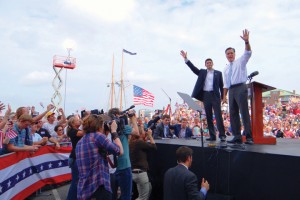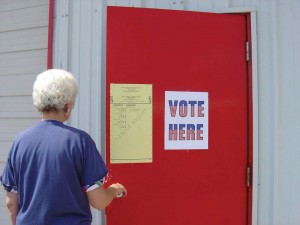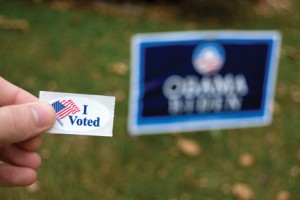 NISARG KAMDAR EXPLORES THE AMERICAN ELECTION PROCESS AND FINDS VALUABLE LESSONS FOR INDIA
NISARG KAMDAR EXPLORES THE AMERICAN ELECTION PROCESS AND FINDS VALUABLE LESSONS FOR INDIA
The two-year-running acrimonious battle to be elected to the august office of the President of the United States of America culminated on November 7 with the reelection of Barack Obama. In the aftermath of this whirlwind ride, the time is ripe to stray light on the deficiencies in the Indian democratic paradigm which we can rectify by simply borrowing from the world’s oldest democracy. As Obama embarks on his second and final term in office, it is paramount upon a country that is more fixated with the political rumblings of the west than the political fortunes of mofussil leaders, to palliate the ails of the modus operandi of elections in India considering a string of state elections and national elections will be upon us with the span of the next two years.
It is preponderant to issue a disclaimer to the effect that the idea of this piece is not to lambast the election system presently existing in India nor is the author a victim of the western inferiority complex hoping to see all and sundry branded Western shipped into this country. The idea is to engage in a conversation to evolve the election process, a natural part of any modern and progressive democracy, in a bid to envelope a larger section of the populace under the canopy of enfranchisement.
PRESIDENTIAL DEBATES
This is skimming off the popular sentiment in India. Almost the entire segment of passive political watchers, those who make up for the electronic media (TV), print media (newspapers) and social media’s traffic, collectively yearn for a Prime Ministerial debate after witnessing such debates through the tools of modern technology. They are enamoured not only the content but also the measurable impact it has on the entire election morale.
The Presidential debates carried with them a certain allure and political theatre which invited viewing and catapulted the American elections to the consciousness of the world zeitgeist. But those are the ancillary benefits. For voters, it offered an opportunity to see the candidates and their ideas of America juxtaposed. It was extremely prominent that the moderator for all four debates – rather than let the candidates indulge in garrulous incontinence and lengthy diatribes – chose to purposefully draw them to the bones of contentions, thus helping delineate their positions. In fact, this cost the contender, Republican nominee Mitt Romney quite a bit, whose inability to offer nuanced details on his plan for economic revival spooked voters and which Obama played to the hilt. This is extremely crucial for India, a country where the politicians permanently float in the realm of ambiguity when it comes to policy, thus making it near impossible to differentiate the major political parties on the basis of their policy agenda. Rather, we are reduced to substituting this with religious nonsense. Having a Presidential debate can make a world of difference, pushing parties to take stand which can be represented at the debates.
Special mention must be reserved for the Commission on Presidential Debates, an independent, non-profit corporation instituted to finance and conduct debates in an efficient, unbiased and ethical manner. Their penchant for setting up debates in a manner which assists voters to draw a clear distinction between the two parties’ position is something India should adopt blindly. The moderators too were firm, erudite and quick to clamp down on any attempt to filibuster.
 EARLY VOTING
EARLY VOTING
Surprisingly and rather unsettlingly, this slipped beneath the radar as far as popular punditry in India is concerned. Unsettling because it helps address and mitigate a much deeper wound than Presidential debate cures – the apathy and sheer torpor of the quintessential voter.
Early voting (also known as advance polling or voting) is the process by which electors can vote on a single or series of days prior to an election. The idea of early voting is to substantially pump up participation and relieve congestion of polling stations on election day.
Early voting is similar to “no-excuse” absentee voting. In many U.S. states, the period varies between four and fifty days prior to election day.
While accounting for the propensity of Indian politicians to win by artifice (it might be too early to encourage voting by post or email) the concept of early voting is certainly implementable and essential.
An array of Chief Election Commissioners have, on countless occasions, expressed disgust at the pathetic polling numbers election after election, particularly chiding the middle class and the elite for their apathy. There can be no better solution than early voting.
Early voting robs people of the perennial excuse of insufferably long lines and irksome timings. Also, it absolves the need to have election day as one another in the long list of national holidays. The US has for decades now had election day as a normal, working day, hardly affording the thought of allowing another day to go to waste.
Having early voting guarantees high polling percentage, is a convenient setup for citizens to exercise their rights and reduces the strain on polling booths on election day. A quarter of Americans, including President Obama himself, chose to lock their vote well before election day.
Organising early voting might be a logistical challenge, like every election in India, but should not prove beyond the capabilities of the superlative Election Commission.
 YOUTH PARTICIPATION
YOUTH PARTICIPATION
Unlike India, both the Democrats and Republicans concentrated a major part of their political rhetoric on wooing the youth. Youth agendas were drafted and policy commitments made with primarily the youth as the voter base.
There is yet no discernible youth identity in the way India votes and the incumbent politicians are hardly bothered about the political lightweights.
The Indian youth still votes on religious and caste considerations.
Secondly, both campaigns had participation from the youth who extended a hand for basic volunteering as well as to be part of the organisations’s setup. This inculcation of the youth as one of the pillars of a successful presidential campaign illustrates the value attached to their insight and makes it a much more participatory democracy.
MORAL INTEGRITY
This election has established that in America probity and rectitudinousness in public life as well as past life as a private individual are unsubstitutable qualities and are held non-negotiable.
Pundits and people might disagree, but the reluctance of Mitt Romney to come clean on his income tax returns at the height of his time as the head of Bain Capital and the infamous and uncharitable “47 percent” remark he made to a private gathering in a secret video created the illusion of chinks in his moral armour, irrespective of his credentials to lead America, and played subconsciously on the minds of Americans.
Barack Obama, on the other hand, enjoyed a clean slate and seemed to carry around genuine empathy and earnestness which helped boost his image. His sterling record while in public office, devoid of any colossal outbreak of idiocy, held him in good stead.
FUNDING
Election funding has always been a contentious issue in India with accusations often flying left, right and centre.
That black money floats around with impunity in election season is an incontrovertible fact. The Election Commission might have gone with its collective might to counter this menace but the success has been anything but resounding.
The American model, however, offers hope, though it too is beset by ills. The idea of the public financing the Presidential election campaigns is based within the chaste tenets of democratic principles which intricately links the candidate with the constituency backing him. The people financing are not just the rich and wealthy; even the plebeians make their significant contribution within their means in a bid to secure their and the country’s future with the candidate whose manifesto they identify with. Such a system establishes a scheme of shareholding wherein the public becomes a shareholder in the success of their candidates. This scheme of instituting ownership in the candidates can probably be the justification for the jubilance of Obama supporters which left many Indians a tad befuddled.
Admittedly, the system is not without its perils, what with corporates and bankers creeping in through Super PACs (Political Action Committees) but at least every penny spent is accounted for.
In Indian election reforms, state funding of elections has been put on hold for far too long, allowing the nefarious elements in society to make merry.
EVOLVE CONSTRUCTIVELY
Our country is in the midst of a major churn. Politicians are facing the heat like never before and unless they react appropriately, they will be dinosaurs
long before they regain their senses.
The proletariat is in a sense of frenzy having just witnessed the juggernaut of American democracy roll ahead, brushing aside any barrier with characteristic contempt.
The nation must not fritter away this opportunity to push ahead with vigour and vitality towards election reforms – reforms which reflect our progress and evolution since Independence.
REPUBLICAN NOMINEE MITT ROMNEY’S INABILITY TO OFFER NUANCED DETAILS ON HIS PLAN FOR ECONOMIC REVIVAL SPOOKED VOTERS AND OBAMA PLAYED IT TO THE HILT IN THE US PRESIDENTIAL DEBATES
PAUL RYAN’S CRITICISM OF OBAMA’S FOREIGN POLICY WAS TERMED BY VICE PRESIDENT JOSEPH BIDEN AS “A BUNCH OF MALARKEY”
DID YOU KNOW?
The Americans do not elect their president directly.
They vote for an elector – a representative who must vote for the same candidate. There are 538 electors. Together, they are called the Electoral College. Each state has as many electors as it has members in Congress (parliament).
When Americans vote for a candidate of a party, they actually vote for an elector of that state.
On election day voters go to the polls to choose the electors in their state, however, they only see the names of the Presidential and Vice Presidential candidates. They vote for a candidate, but they in fact vote for the elector. This is called the popular vote.
A candidate needs 270 electoral votes to win the election.
In almost all states the candidate who receives the most popular votes wins that state’s entire electoral votes.
The President is elected only in December.
Even though the winner of the election is known the following morning, he/she is officially elected President in December when the electors meet. The President is then sworn into office only in January when the oath of office is taken.
The United States of America is a Constitutional Republic.
The Republic of India is a Parliamentary Representative Democracy. While we will assiduously avoid diving into a stream of jargon, we shall keep that in mind to avoid making unfounded suggestions.
Volume 2 Issue 6



























